translation
Latest
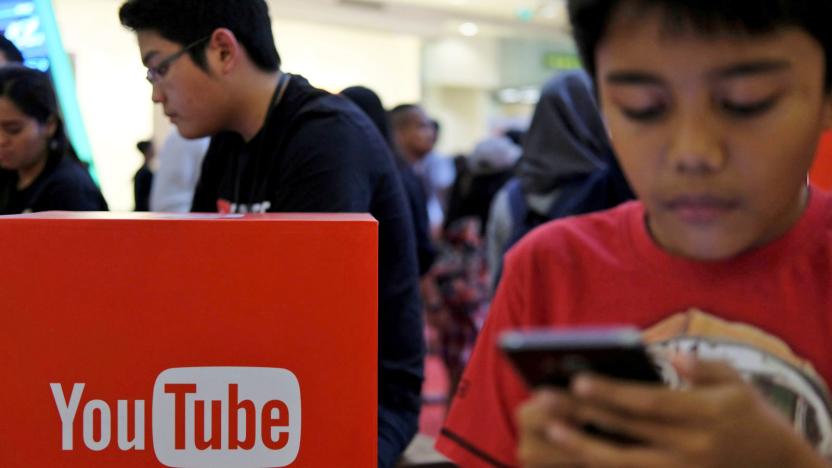
YouTube wants you to translate video descriptions
YouTube has had community-sourced subtitle translations since 2015, but they're only useful if people can find the videos in the first place... what about labeling the videos? You now have a chance to help. The internet video service has expanded its Community Contributions to let you translate video titles and descriptions, not just captions. If you think a video in your preferred language would be helpful elsewhere in the world, you don't have to ask the clip creator to do you a favor.

Netflix has a new translation test to avoid subtitle fails
Netflix supports over 20 languages, many of which aren't dubbed, so subtitles are often the only way for foreign viewers to follow the plot. While the streaming company holds itself to a high standard, the internet abounds with tales of wonky translations. That's why it has developed Hermes, the first-ever proficiency test for caption translators by a major content provider. The aim is to identify subtitlers that understand the subtleties of a language and won't translate "Smashing Pumpkins" to "Pumpkin Puree" (above).
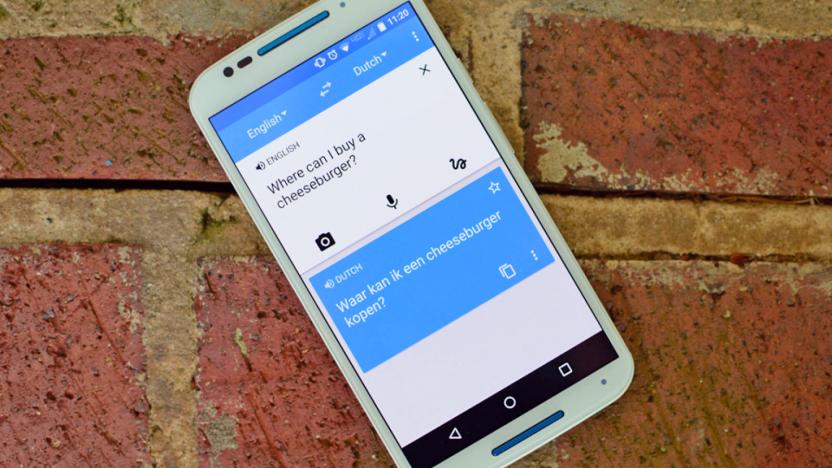
Google's AI-powered translator works with three more languages
Google wants language translation to sound more natural. Last year, it began moving away from phrase-based machine translation and created an AI-powered system called Google Neural Machine Translation (GNMT). Now, the company says it's expanding GNMT to Hindi, Russian and Vietnamese.

Skype translations now work with calls to phone lines
Skype's live translations are no longer limited to fellow internet callers. If you're part of the Windows Insider Program, you now have access to a Skype Preview release for PCs that will translate calls to conventional phones, whether they're cellphones or landlines. If you need to contact a hotel where no one speaks your native tongue, you might have a chance of holding a conversation. The recipients get a notice that Skype is recording and translating the call, so they have an opportunity to hang up if they're particularly concerned about their privacy.

Google's AI can translate language pairs it has never seen
Google's AI is not just better at grasping languages like Mandarin, but can now translate between two languages it hasn't even trained on. In a research paper, Google reveals how it uses its own "interlingua" to internally represent phrases, regardless of the language. The resulting "zero-shot" deep learning lets it translate a language pair with "reasonable" accuracy, as long as it has translated them both into another common language.

Google expands mission to make automated translations suck less
What started with Mandarin Chinese is expanding to English; French; German; Japanese; Korean; Portuguese and Turkish, as Google has increased the languages its Neural Machine Translation (NMT) handle. "These represent the native languages of around one-third of the world's population, covering more than 35 percent of all Google Translate queries," according to The Keyword blog. The promise here is that because NMT uses the context of the entire sentence, rather than translating individual words on their own, the results will be more accurate, especially as time goes on, thanks to machine learning. For a comparison of the two methods, check out the GIF embedded below.

Skype's live translations are now available in Russian
Since launching last year, Microsoft has steadily been building out Skype's automatic live-translating ability, and making it even easier to speak with more people around the world. The feature, which translates the voice of the person on the other end of your Skype call into instant subtitles and speech, can now handle voice-to-voice and voice-to-text for Russian, in addition to the eight other languages it already supports.
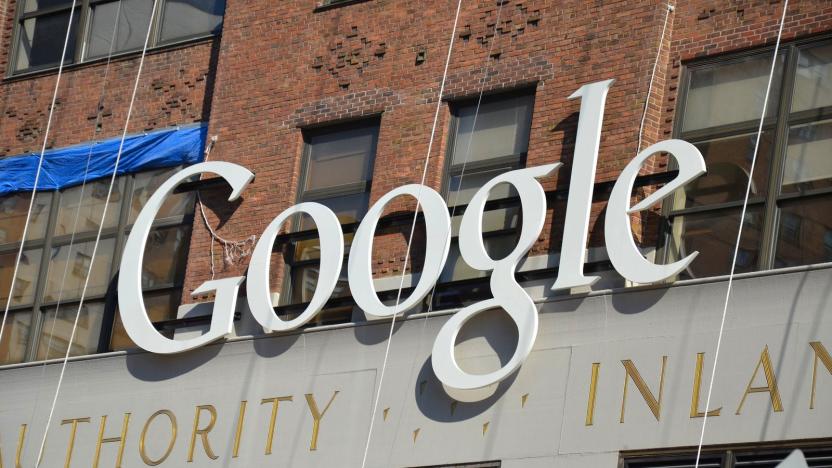
Google's Chinese-to-English translations might now suck less
Mandarin Chinese is a notoriously difficult language to translate to English, and for those who rely on Google Translate to decipher important information, machine-based tools simply aren't good enough. All that is about to change, as Google today announced it has implemented a new learning system in its web and mobile translation apps that will bring significantly better results.

IBM partnership puts Watson in your ear to help you at work
Smart earphones like Bragi's Dash aren't just for personal activities like music and running -- they could also help you get some serious work done. Bragi and IBM are partnering on ways to combine "hearables" like the Dash with Watson's Internet of Things platform to help you communicate and collaborate with your teammates. The Watson supercomputer could translate what you're saying for a coworker, for instance, or give you instructions and smart notifications. Higher-ups could benefit, too -- they could get a sense of your location and safety without relying so much on cameras, or have you authenticate with your voice.

Google wants your help to improve its automatic translations
Google's ability to interpret and translate handwriting isn't perfect. Sometimes you'll scribble a word or take a photo of a restaurant menu on holiday, only to have a garbled mess thrown back at you. To help its "smart" assistants and services, Google has released a new app on the Play Store called Crowdsource. It's a bare-bones affair, asking you to transcribe digital squiggles and photographed road signs. There are no discernible rewards, only the occasional message ("you're great!") and meaningless 'milestone' when you've completed a certain number of tasks. In short, you'll need to really love Google to open the app more than once.
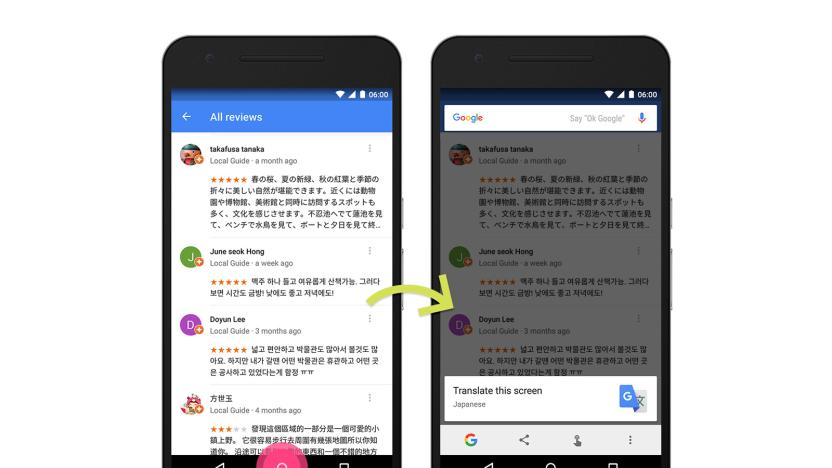
Google Now on Tap translates languages in any app
You no longer have to select text or keep a mini-app running to translate text in your Android apps. Google is expanding Android Marshmallow's Now on Tap feature to support text translation from any screen. If you're looking at text that doesn't match your phone's current language, Now on Tap will offer to translate that screen even if there are multiple unfamiliar tongues on screen. It's available today if your phone is set to use either a major European language or Russian... and it's not the only feature rolling out today.

Instagram adds a translation feature for text inside the app
On the heels of announcing it amassed 500 million users, Instagram is adding a new feature to help its global audience better understand each other. The filter-driven photo and video app will get a translation tool "in the coming month." When it arrives, you'll be able to tap a "See Translation" link to make sure you know exactly what a bio, caption or comment says. Instagram currently supports 24 languages, but it did explain that older comments and captions may not be privy to the update.

Facebook auto-translates 200 million lines of text every day
Facebook reaches more than 1.6 billion users in every corner of the Earth. Making sure everybody understands one another, at least at the linguistic level, has fallen to the company's machine learning algorithms. According to Alan Packer, Facebook's Director of Engineering for language technology, the digital babelfish is doing a pretty great job of it.

Microsoft beats Google to offline translation on iOS
Microsoft updated its Translator app to support offline translation on Android back in February, and it's just added the same feature to the iOS version. Like the Android app, the translation works by way of deep learning. Behind the scenes a neural network, trained on millions of phrases, does the heavy lifting, and the translations are claimed to be of "comparable" quality to online samples. Your mileage will apparently "vary by language and topic," but even an adequate translation is probably worth it when you're saving on data costs abroad.

Skype's live translator feature now supports Arabic
Skype is probably best-known as a video chat client, but Microsoft wants it to be all things chat to all people -- even if they aren't speaking the same language. Back in 2014, the app gained the ability to take your speech and translate it into selected other languages so people who didn't speak the same language could still communicate. Today, Skype is officially rolling out support for its eighth spoken language: Arabic.
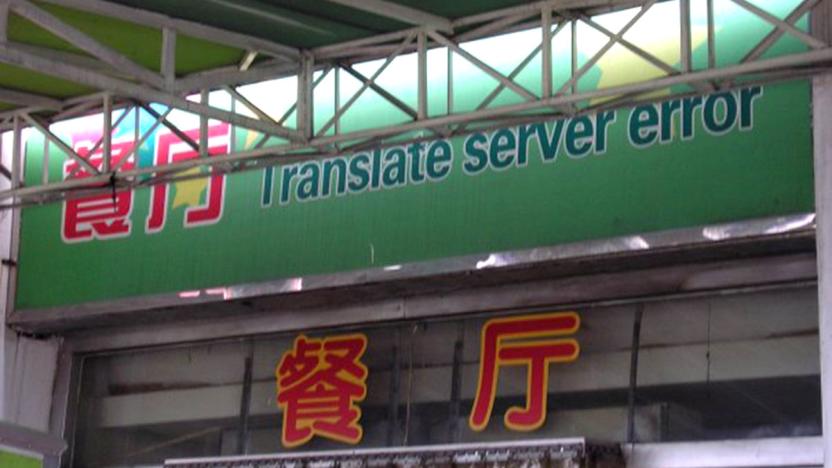
Google thinks it can make translated apps fail less
While often hilarious, mistranslations can be embarrassing or even dangerous. Google, which is no doubt responsible for a large number of those, has come up with a way to help developers ensure their apps make sense in other languages. The problem is that machines don't understand context -- as an example, Google cites the word "auto," which can be translated to French either as automatic or automobile, depending on how it's used. That prompted the search giant to develop the Language Quality Survey (LQS), consisting of 10 questions that developers can pose to foreign users.

Google-powered beer fridge translates thirst in 40 languages
Better brush up on your language skills... they might just get you a free drink. Google and Thinking Box have teamed up to create Molson's Global Beer Fridge, an appliance that depends on Google's real-time voice translation to serve cool refreshments. The refrigerator only opens once it detects people saying "I am Canadian" (Molson's classic slogan) in six of 40 languages, ranging from French to Hindi to Mandarin. That's ostensibly a nod to both Canada's cultural diversity as well as the country's July 1st birthday, although it conveniently guarantees a crowd for this not-so-subtle publicity stunt. It's not often that you see this much sophistication in a sales ploy, mind you, and it's clear that the underlying technology could be useful in everyday vending machines. Just be ready to book a trip if you're hoping to score some brews -- the fridge makes its next appearance in Toronto on July 10th, when the Pan Am Games start.

Twitter's Bing-powered translations are back
Twitter's great for connecting its users to people from around the world, but what about when they don't speak the same language? After testing out a solution in fits and starts, Twitter has officially introduced Bing-powered translations right in the feed. Of course, if you've ever relied on machine-translation (and if you've worked the late shift on a tech site, you definitely have) you know the results can vary in quality, but it's usually enough to get the gist of what's being said. It's definitely easier than copying characters back and forth, so until you actually crack open that copy of Rosetta Stone, just look for the globe icon and "translate this" button. (If it's not there, make sure "Show Tweet translations" box is checked in your account settings).
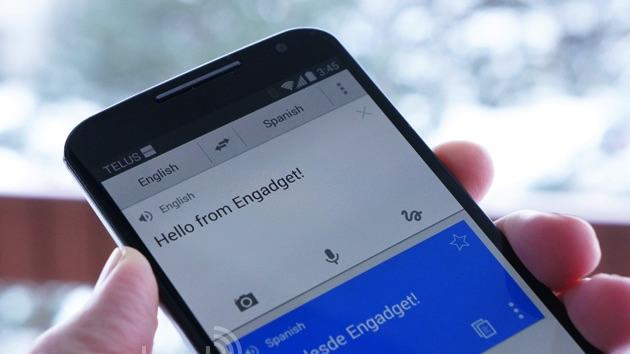
Google moves one step closer to becoming a universal translator
Even with the assistance of modern technology, holding a conversation in two different languages can be difficult. Google Translate allows you to speak with someone and have each utterance translated as text and audio, but until now you had to manually toggle every time the other person talked. As expected, Google is speeding up the process with smarter language recognition and speaker switching, which comes as part of a new update. So when you boot up the app and press the microphone icon, it'll recognise which of the two languages is being spoken, offer a translation and then automatically alternate whenever the conversation flips over. No more tapping on the screen again and again.

Google's translation app will soon turn speech into text on the fly
Converting unfamiliar speech to text in Google Translate is currently an awkward affair: you have to start a recording and wait until a moment after you're done to find out what the other person said. That's not exactly living up to the dream of a Star Trek-like universal translator, folks. However, the New York Times understands that Translate is about to get considerably smarter. Reportedly, an updated version of the mobile app (coming "soon") will automatically detect speech and translate it right away. All you'd really have to do is hold your phone up with the app running -- important if you'd rather not go through a song-and-dance routine just to find out where the washrooms are.










